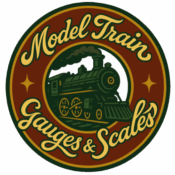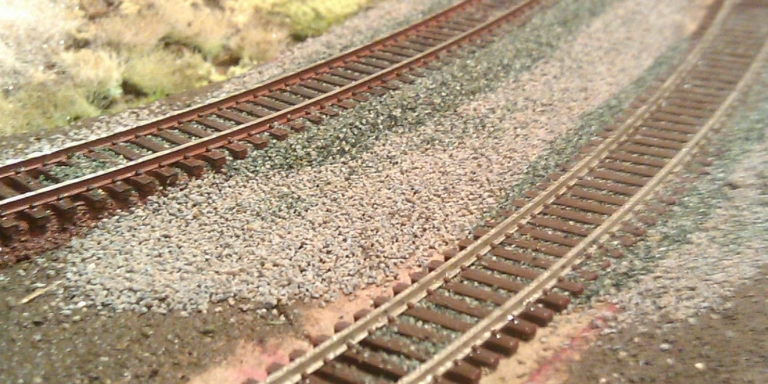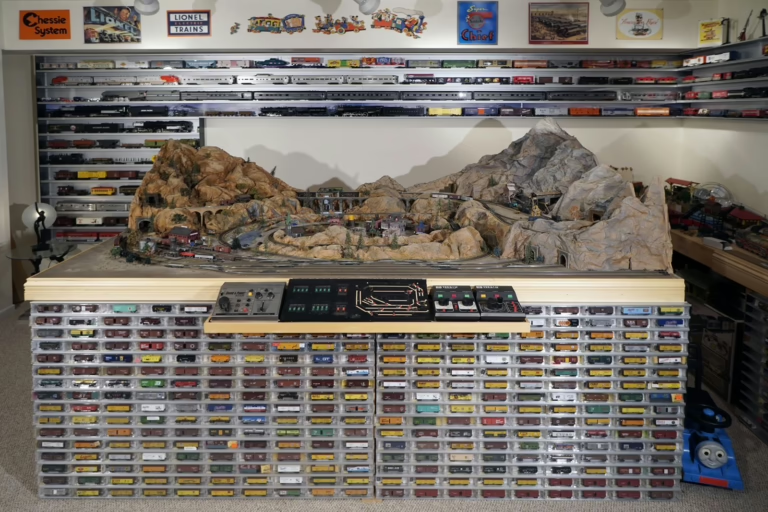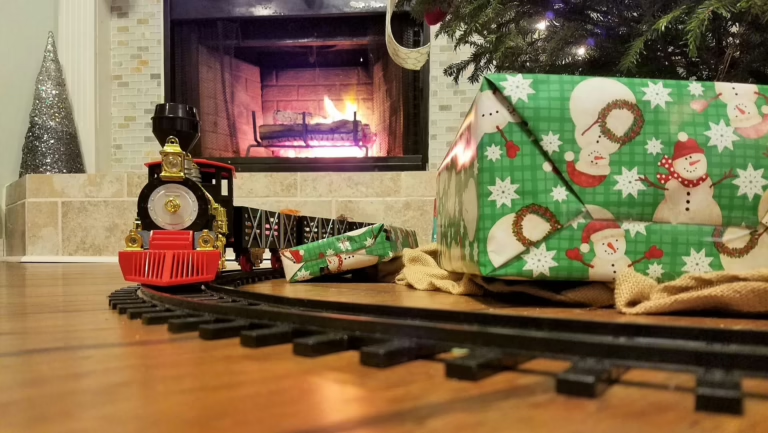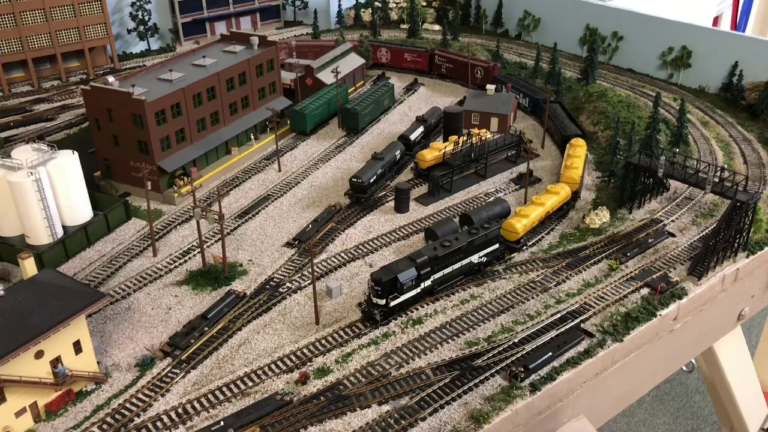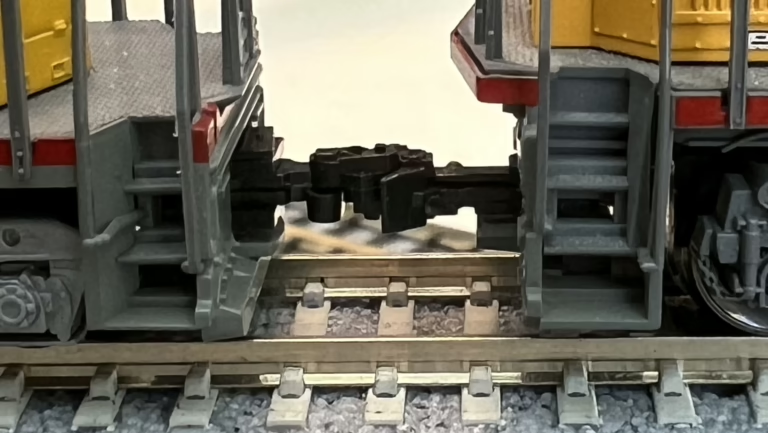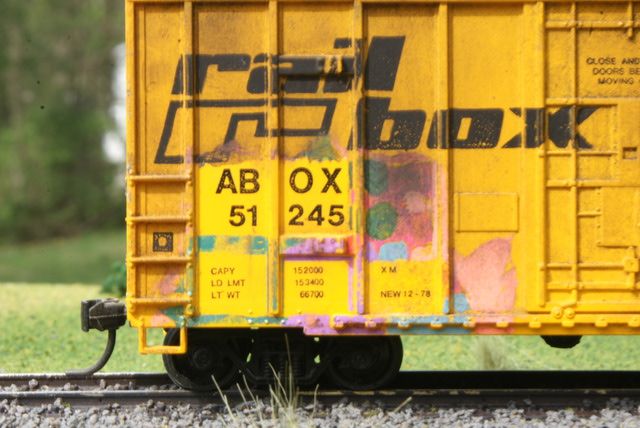Is Code 100 or Code 83 Better for Realistic Model Railroads?
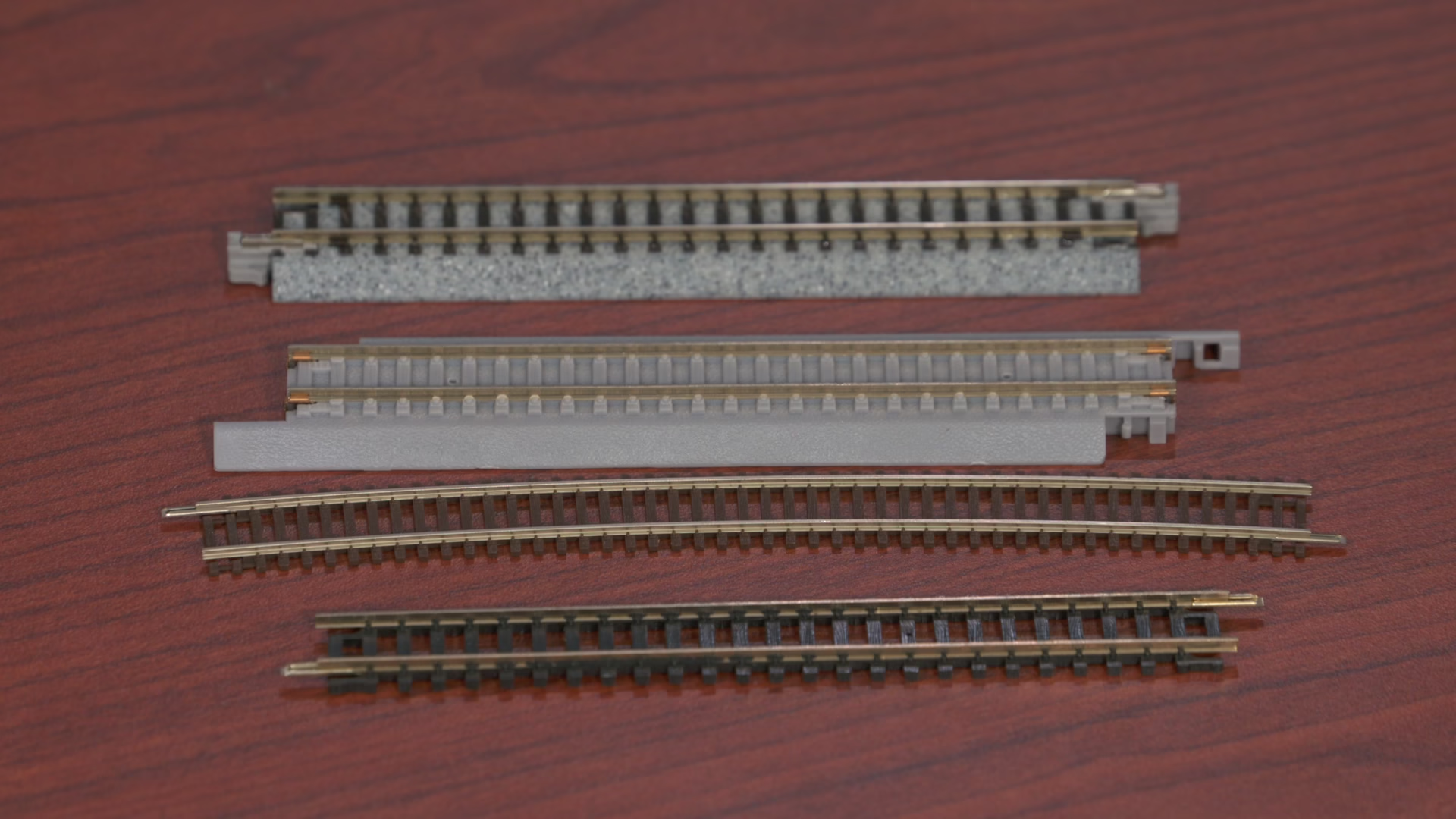
Model railroad track is often categorized by “code,” which refers to the rail height in thousandths of an inch. In HO scale, the most common codes are Code 100 (0.100″ rail height) and Code 83 (0.083″ rail height). This seemingly small difference has implications for realism, compatibility, and product availability. In this detailed comparison, we’ll explore Code 100 vs Code 83 track – including both sectional track (pre-formed pieces of fixed lengths/curves) and flex track (flexible track that can be bent to custom curves) – across major brands like Atlas, Peco, Bachmann, and others. We’ll highlight the pros and cons of each type, covering realism, rolling stock compatibility, U.S. availability, typical prices, and more. A comparison table is provided for a quick overview of key differences, and we conclude with recommendations for beginners and advanced enthusiasts.
Understanding Track Codes and Size Differences
Track code is essentially the rail height. Code 100 rail is taller and thicker than Code 83. In HO scale terms, Code 83 rail height is much closer to the size of real modern mainline rails, whereas Code 100 is a bit oversized relative to prototype. For example, Code 100 track in HO corresponds to an extremely heavy 156-pound rail (per yard) – a size rarely seen except perhaps on the Pennsylvania Railroad – while Code 83 equates to about 132-pound rail, which is typical for North American mainlines. In actual measurements, Code 100 stands about 8.7″ high in HO scale, whereas Code 83 is about 7.2″ high (in scale inches). The difference is subtle to the naked eye (just 0.017″), but it has a noticeable effect on appearance.
Code 100 Track
0.100″ tall rail. Historically the standard for HO, found in many starter sets and older layouts. Rails are relatively larger/heavier looking.
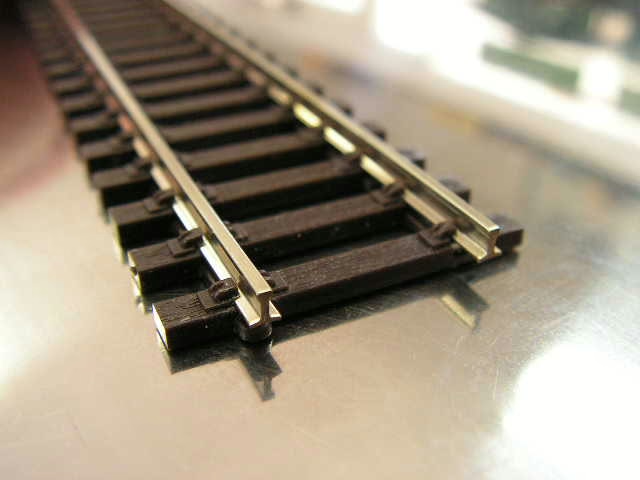
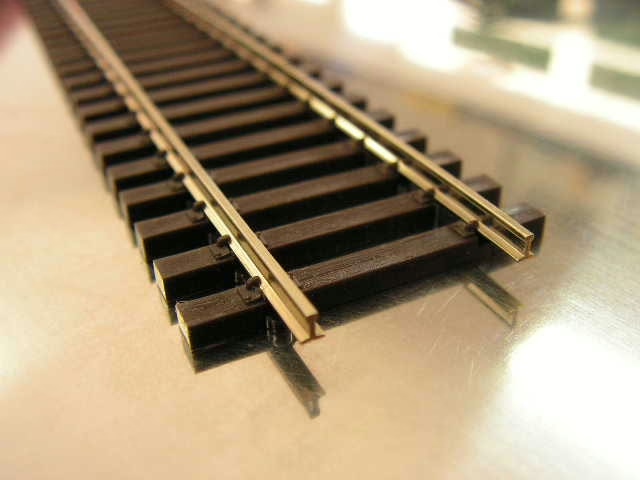
Code 83 Track
0.083″ tall rail. A newer standard for more scale-accurate HO track, especially popular among serious modelers for its closer-to-real appearance.
Visual Realism
Code 83 track generally looks more realistic than Code 100. The lower profile rail is closer to the height of real rail in HO scale, making locomotives and cars appear more to scale (the slightly smaller rail height makes the models look “more massive” by comparison). In contrast, Code 100’s taller rail can look oversized, especially in close-up photos or eye-level views. Many modelers note that Code 100 rail and its molded spike heads can appear chunky.
Code 83 track by Atlas and others also features finer spike and tie details – for instance, smaller spike heads and thinner ties with closer-to-scale spacing than the old Code 100 tracks. Atlas Code 100 sectional track has black plastic ties that are a bit thicker and widely spaced, whereas Atlas Code 83 uses brown ties that are more prototypical in size and spacing. The tie color difference (black vs brown) is partly a branding choice (brown ties implying a more realistic product line) – real wooden ties are usually blackish-brown when new (from creosote) and fade to gray or brown with age. In any case, Code 83 track tends to mimic the look of real track better out-of-the-box, with finer details and a less “toy-like” aesthetic.
Despite Code 83’s realism, well-laid and painted Code 100 track can be made to look good. With proper ballast and weathering, many observers find it hard to tell the difference unless they look closely or in photographs. Some modelers compromise by using Code 100 on hidden or heavy-traffic mainline areas and Code 83 on visible sidings or secondary tracks, similar to how real railroads use heavier rail in high-stress locations. Painting the rails a rusty brown and weathering the ties (e.g. a grimy gray-black wash) can also reduce the visual bulk of Code 100 rails, making them appear closer to Code 83.
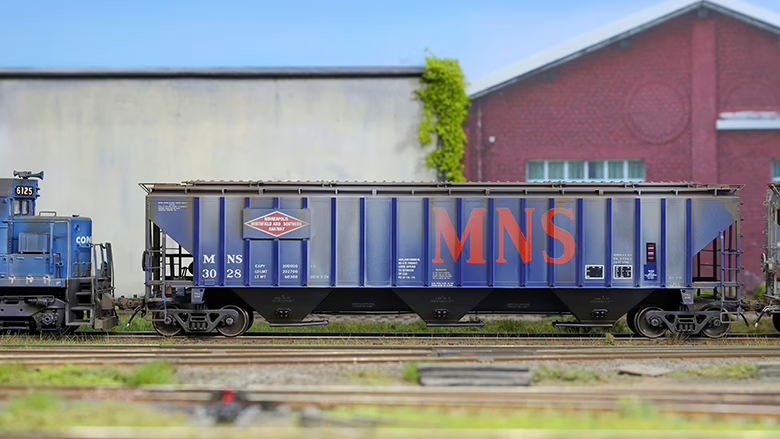
Compatibility with Rolling Stock
One practical concern is whether all your HO trains will run on the different codes of track. Mechanically, Code 83 and Code 100 track both use the same gauge (16.5 mm apart rails) and will carry HO trains reliably. The main compatibility issue is wheel flange depth. Older HO models (especially from the 1970s or earlier) sometimes have oversized flanges – often nicknamed “pizza cutter” flanges – which can bump against the spike detail or tie plates on very low-profile track. In extreme cases on smaller codes (like Code 70 or Code 55), old deep-flange wheels will hit the ties and cause bumps or derailments.
However, Code 83 is still tall enough to accommodate most equipment. In fact, Code 83 is the choice for a more prototypical rail that can still handle deep flanges – Code 70 cannot. Only some very old or toy-grade HO trains (e.g. old Tyco, early Bachmann, or certain European models with NEM deep flanges) might have trouble on Code 83. The vast majority of modern HO rolling stock (post-1980s) comply with NMRA standards (RP-25 wheel profile or similar), which run perfectly fine on Code 83. Many modelers report they’ve “yet to actually encounter” a modern loco or car that doesn’t run on Code 83. For example, one hobbyist tested a locomotive from the 1970s on Code 83 and found it ran just fine. Thus, unless your collection includes very old HO pieces with oversized flanges, compatibility is essentially a non-issue for Code 83.
By contrast, Code 100 track will run absolutely anything that is HO gauge. Its taller rail and larger clearance accommodate old and new wheelsets alike. This is one reason Code 100 became the long-time “industry default” – it’s very forgiving. Starter train sets almost always include Code 100 track (often the snap-together kind with roadbed) because manufacturers assume beginners might have older or budget models with less refined wheels. If you do have some 1950s–60s HO rolling stock or perhaps some imported models with huge flanges, sticking to Code 100 (at least on main lines) might save headaches. Otherwise, for typical DCC-ready locomotives and modern stock, Code 83 works correctly with the majority of models.
Strength and durability
Another compatibility aspect is physical strength. Code 100’s heavier rail is a bit more robust – less prone to bending or damage if mishandled – and its turnouts historically were a bit sturdier (older Shinohara/Atlas Code 100 turnouts were famous for ruggedness). Code 83 rail, being thinner, can be slightly more delicate, especially in intricate turnout points or if you manhandle flex track aggressively. That said, well-made Code 83 track is plenty strong for normal use, and operationally there’s no difference in electrical performance or train handling simply due to code. Some modelers have noted that newer Code 83 turnouts may have finer tolerances, reducing wheel drop in frog gaps and allowing smoother operation through the switch. In short, both codes can be made to operate equally well. If your track is laid properly, trains will run smoothly on either Code 100 or Code 83.

Sectional vs. Flex Track Options
Both Code 100 and Code 83 are available in sectional track (pre-formed straight pieces, curves of fixed radius, turnouts of standard angles, etc.) as well as flex track (usually sold in 36″ flexible strips you can bend to shape). The code difference does not fundamentally change how sectional or flex track works, but product availability differs by brand and code:
Atlas
Atlas offers a full range of Code 100 sectional track (the traditional Snap-Track system with black ties) and Code 83 sectional track (with brown ties). Common pieces like 9″ straight sections, 18″ radius curves, turnouts (#4/#6), crossings, etc., are available in both codes. Atlas also sells flex track in both Code 100 and Code 83. Notably, when Atlas introduced its Code 83 line, they ensured most pieces were the same price as the Code 100 equivalents, making it easy to choose Code 83 without a cost penalty. Atlas Code 83 flex track is known for being very easy to bend and form into smooth curves (it’s quite flexible or “floppy” compared to some others). Atlas sectional track (in either code) is widely available in U.S. hobby shops.
Peco
The UK-based Peco has Streamline flex track in multiple codes. For HO, Peco produces Code 100 and Code 83 flex track, as well as Code 100 sectional (“Setrack”) pieces. Peco’s Code 100 flex (and their Setrack geometry) has historically been popular in Europe and with DC analog layouts, while Peco Code 83 is a line they specifically designed for North American prototypes (with correct tie width and spacing for U.S. railroads). Peco Code 83 flex track and turnouts have brown ties and very fine detailing. Many advanced U.S. modelers love Peco turnouts for their solidity and the built-in spring that keeps points aligned. Peco flex track is somewhat stiffer than Atlas (it tends to hold its shape once bent, and springs back less), but it’s generally easier to flex than the very stiff Micro Engineering flex. Peco offers a variety of turnouts in Code 83 (e.g. #5, #6, #8, curved turnouts, etc.), although the selection may not be as extensive as their Code 100 or as the Walthers (Shinohara) Code 83 range. In the U.S., Peco track is available through importers and well-stocked hobby shops, though it tends to be pricey (one modeler quipped “I like the code 83 from Peco… just not the extra cost”).
Bachmann
Bachmann’s E-Z Track system is a popular snap-together sectional track with integrated gray roadbed. E-Z Track is Code 100 (with tall nickel-silver rail) – it’s designed for ease of use in starter sets and temporary floor layouts. Bachmann does not offer a Code 83 version of E-Z Track, so if you want a roadbed track system in Code 83, you’d have to look to other brands (like Kato). E-Z Track pieces have built-in roadbed and come in various curve radii, straights, and turnouts, but they are less flexible than flex track. They are, however, completely compatible with other Code 100 track (you can connect E-Z track to Atlas Code 100 by using standard rail joiners or adapter sections). Bachmann track is widely available and great for quick setup, but for permanent layouts many modelers eventually transition to more realistic track (Atlas, Peco, etc.) once they are comfortable.
Walthers (Shinohara)
Walthers distributes a comprehensive line of Code 83 track components – many of which originated from Shinohara designs – including flex track and a large variety of turnouts (numbered turnouts, curved turnouts, double-crossovers, double-slip switches, etc.). This line is aimed at advanced modelers who need complex trackwork in Code 83. Historically, Shinohara also made Code 100 turnouts, but Walthers has focused on Code 83 as the “scale” standard. If your layout requires a specialized piece not offered by Atlas (for example, a curved turnout or a #8 double-slip), the Walthers Code 83 range is a likely source (with corresponding higher cost per turnout). Shinohara/Walthers flex track is stiffer than Atlas (similar to Peco or a bit more rigid), requiring careful bending. Many U.S. hobbyists mix Atlas flex with Walthers or Peco turnouts without issue, adjusting for slight differences in tie thickness by shimming or sanding as needed.
Micro Engineering
Micro Engineering produces highly regarded flex track in Code 83 (also Code 70 and Code 55 for lighter rails). ME flex track is famed for its realism: it features very fine, scale-size ties and spike detail with irregular tie spacing to mimic a real railroad (every tie is not perfectly evenly spaced, which looks more natural). It comes in weathered or non-weathered rail versions. The downside is ME flex track is very stiff – it holds curves firmly once bent, but getting it into a smooth curve takes patience (many modelers joke you “wrestle” with ME flex to shape it). The effort can be worth it because, as one comparison noted, ME’s rail profile and detail make Atlas Code 83 look “crude” in comparison. Micro Engineering doesn’t make sectional track; it’s aimed at advanced layout builders using flex track exclusively. It’s also a bit more expensive than Atlas (and often sold in 6-packs).
Kato
Kato offers an HO Unitrack system (similar to their popular N scale Unitrack). Kato Unitrack HO uses Code 83 nickel silver rail mounted in a realistic-looking molded roadbed base. It’s sectional (various straight and curve sections, #6 turnouts, etc.) and known for excellent precision and reliable snap-together connections. While not as ubiquitous as Bachmann E-Z Track in HO starter sets, Kato Unitrack has a following especially for those who want a high-quality, but easy-to-assemble track system. It is fully compatible height-wise with other Code 83 track. The main limitation is the range of pieces is somewhat limited and price is relatively high. Still, it’s a viable option for those who want Code 83 from the start but in a beginner-friendly format.
Other brands
A few other makers (like Life-Like with its old Power-Loc track, or Model Power and Tyco in the past) have offered sectional track, but these were generally Code 100 (and often brass or steel rail in older times). Today, nickel-silver Code 100 remains common in entry-level sets, whereas Code 83 is the domain of the hobbyist-grade products. Brass track (gold-colored rail) was common decades ago in Code 100 but is not produced in Code 83 and largely has disappeared due to oxidation issues – so stick to nickel-silver for either code.
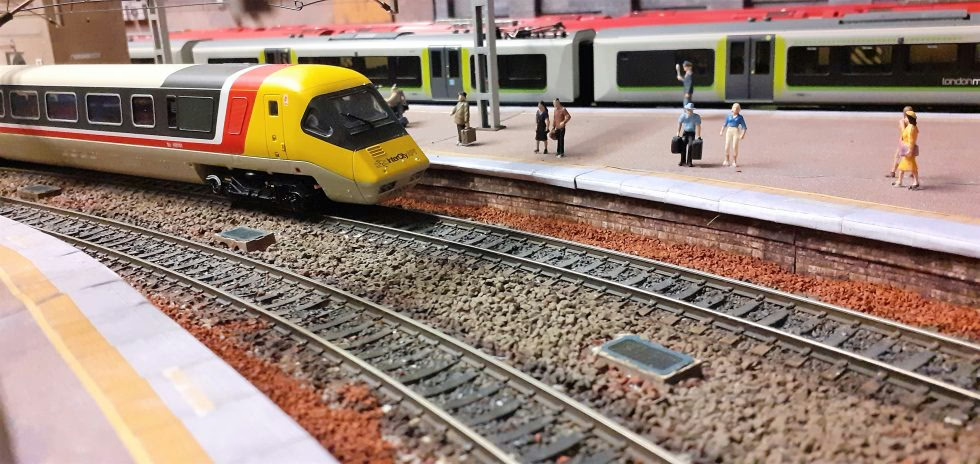
Price and Availability in the U.S.
In the United States, Code 100 track had long been the most widely available, but Code 83 has become extremely common over the past couple of decades. Availability: Any well-stocked model railroad shop will carry Atlas Code 100 and Code 83 flex and sectional track. Bachmann E-Z Track (Code 100) is found in most hobby stores and even toy stores due to its inclusion in train sets. Peco and Micro Engineering products are available through hobby retailers, though you may need to seek out specialized stores or online shops for the full selection (especially Peco’s Code 83 line or ME weathered flex). Walthers Code 83 track components are typically found via the Walthers catalog or dealers that cater to advanced model railroaders.
Typical Price Ranges
The price difference between Code 100 and Code 83 depends on the brand. For Atlas, the company deliberately prices Code 83 the same as Code 100 for most items. This means you’ll pay roughly $5 for a pack of four 9″ straights or curves in either code, and flex track might be about $4–$6 per 3-foot piece (street prices). Bachmann E-Z Track costs a bit more per section since it includes roadbed; for example, a 9″ straight might be $2–$3 each and turnouts $20+, but these are Code 100 and often bundled in sets.
Peco track is generally pricier: a single Peco Code 83 turnout can be $30–$40, and a 36″ flex piece around $7–$8. That “extra cost” for Peco Code 83 is noted by many modelers, though Peco’s quality is high. Micro Engineering flex is about $7 per piece (sold in bundles), again more expensive than Atlas. Kato Unitrack HO is comparable to or slightly above Bachmann in price (e.g. a pair of turnouts can be $40–$50).
Overall, Code 100 used to have a cost advantage, but over the years that gap has shrunk. Today, the choice can be made on preference rather than budget – for many products there’s only a negligible price difference. The real cost consideration is that some specialized track pieces (like certain complex turnouts) might only exist in one code or the other, potentially affecting your budget if you have to mix brands.
Mixing Codes
It’s worth noting you can mix Code 100 and Code 83 on the same layout. This is done using transition rail joiners (special joiners that compensate for the rail height difference) or by shimming the lower rail up at the joint. Atlas and Peco sell transition joiners, or you can DIY by flattening one end of a regular joiner. Many modelers use Code 100 for hidden trackage or older sections, and Code 83 for visible areas. The transition is barely noticeable if done neatly (often hidden in a straight section or on a less visible part of the layout). The small 0.017″ height difference can also be visually masked by a bit of extra ballast or paint if needed. So, investing in Code 83 for the looks doesn’t mean scrapping any existing Code 100 track; they can coexist with minor effort.
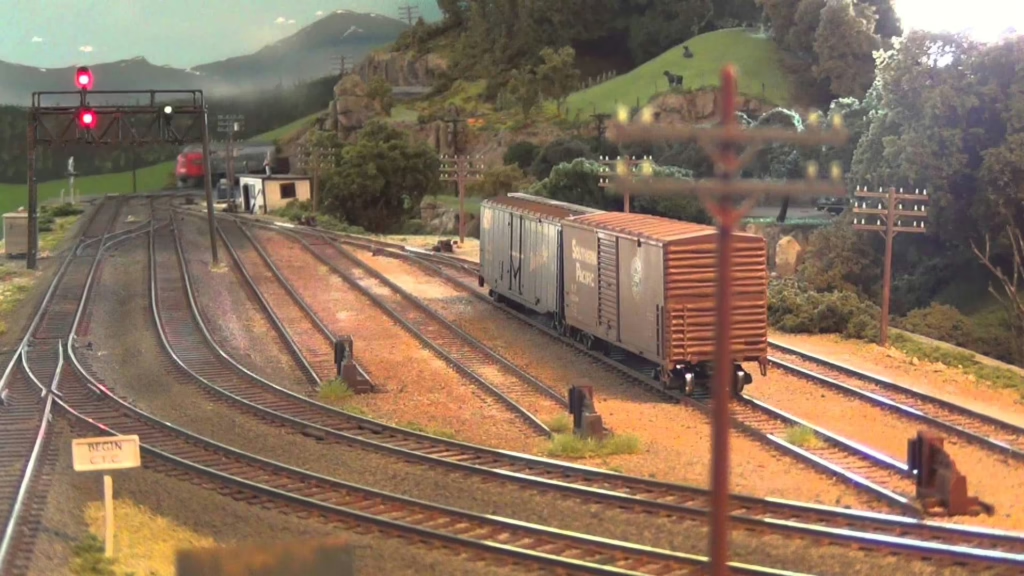
Pros and Cons Summary
To crystallize the differences, here are the key pros and cons of Code 100 vs Code 83 in HO:
- Code 100 – Pros:
- Maximum Compatibility: Can run any HO rolling stock, including older models with deep flanges, without wheel contact issues.
- High Availability: Long-standing standard; widely available in hobby shops. Most starter sets and snap-track systems use Code 100, making it easy to expand beginner layouts.
- Durability: Thicker rail is slightly sturdier; tolerates rough handling and holds gauge well. Classic Code 100 turnouts are often robust and forgiving.
- Cost: Generally the least expensive option (though the gap is small now). You can often find used Code 100 track second-hand from older layouts, too.
- Code 100 – Cons:
- Oversized Appearance: Rails and spike heads look overscale (about 20% taller than scale). Can make models look more toy-like, especially up close or in photos. It’s “really oversized on any layout,” as one modeler put it.
- Less Realistic Detail: Often comes with larger tie spacing, thicker ties, and unrealistically large spike molds (e.g. Atlas Code 100’s spikes). Ties are usually black plastic, which may appear less authentic (though they can be painted).
- Limited Fine Scale Use: Not typically used by “fine scale” modelers for visible trackage; if you desire absolute realism or light-rail branch lines, Code 100 will look too heavy. Harder to mix with smaller code track (like Code 70) used in secondary tracks.
- Code 83 – Pros:
- Prototypical Look: Closer to prototypical rail size for mainlines. Delivers a noticeable improvement in realism – smaller rail profile and finer details make locomotives and cars look more in scale.
- Widely Compatible: Works with the majority of HO models (only the most obsolete wheel flanges might be problematic). Essentially all modern hobby-grade trains run on Code 83 without issues.
- Good Variety (Now Standard): A huge range of track products is available in Code 83 today – from Atlas flex/sectional track and turnouts to Walthers’ specialized switches and Peco’s flex/turnouts. It has effectively become the “new standard in model railroading” for HO, meaning you won’t be short of options.
- Blend of Strength and Detail: Code 83 track is strong enough to handle regular use but also detailed in appearance. It can be combined with even finer Code 70 or 55 in yards for ultimate realism (advanced technique), or combined with Code 100 in staging. It is considered the ideal balance of realism and reliability by many.
- Code 83 – Cons:
- Slightly Higher Cost: Depending on brand, Code 83 can be a bit more expensive (Peco and Micro Engineering products especially). However, Atlas mitigates this with equal pricing to Code 100 in many cases.
- Not in Starter Sets: Beginners starting from train sets will have Code 100 track by default – switching to Code 83 requires new purchases (and possibly transition joiners). Also, some very sharp 18″ radius “snap track” pieces in Code 83 might not be as ubiquitous (though Atlas does make them).
- Marginally More Delicate: The smaller rail can be a tad more delicate. You should take care when cutting or soldering Code 83 rails (they file away faster). Turnout points on Code 83 can be slightly more fragile than on chunky Code 100 turnouts. In practice, this is a minor issue, but one to be aware of during installation.
The differences can be further visualized in the comparison table below:
Key Differences Between Code 100 and Code 83 (HO Scale Track)
| Aspect | Code 100 Track | Code 83 Track |
|---|---|---|
| Rail Height (HO scale) | 0.100″ high rail (Code 100). Overscale height (about 8.7″ tall in 1:87 scale). Represents extremely heavy prototype rail (≈156 lb/yd). | 0.083″ high rail (Code 83). Closer to scale (≈7.2″ tall in HO), matching typical mainline rail (≈132 lb/yd). |
| Appearance & Detail | Less prototypical – taller, thicker-looking rail. Larger molded spike heads and often wider tie spacing. Ties usually black plastic; looks toy-like unless painted/weathered. | More realistic – lower profile rail makes models look more to scale. Finer spike detail and closer-to-scale tie size/spacing (Atlas Code 83 uses brown ties). Blends in better visually, especially in photos. |
| Rolling Stock Compatibility | Universal compatibility – accommodates all HO wheel flanges (including old deep-flange “pizza cutters”). Ideal if running older or budget train-set equipment. | Broadly compatible with almost all modern HO models (NMRA RP-25 wheels). Only very old stock with oversize flanges might have issues (rare). Generally trouble-free for current locomotives and cars. |
| Availability (U.S.) | The long-time standard – very widely available. Sold by all major brands (Atlas, Bachmann, Peco, etc.). Starter sets and most snap-track systems use Code 100. Huge second-hand supply from older layouts. | Now a new standard for realism – widely available as well. Atlas offers full line of Code 83 track pieces; Walthers, Peco, Micro Engineering cater to advanced needs. Not typically included in beginner train sets, but easy to find at hobby shops. |
| Format Options | Available in sectional track (e.g. Atlas Snap-Track, Bachmann E-Z Track with roadbed, Peco Setrack) and flex track (Atlas, Peco, etc.). Many turnout sizes in Peco and older Shinohara lines. Suits any layout style (temporary or permanent). | Also available in sectional (Atlas makes Code 83 sectional pieces; Kato Unitrack is Code 83 with roadbed) and flex track (Atlas, Peco, ME). A full array of turnouts and crossings in Code 83 exists (Atlas, Peco, Walthers). Often used with flex track by serious modelers for realistic curves. |
| Typical Price Range | Generally cheaper (or equal) in cost. Mass-produced in large quantities. For example, Atlas Code 100 and Code 83 pieces are about the same price per Atlas’ pricing, but budget brands and old stock are usually Code 100. Brass track (vintage) only exists in Code 100. | Often similar cost to Code 100 for standard items. Some premium Code 83 products (Peco turnouts, ME flex) cost more than basic Code 100. Overall, price is no longer a major barrier – many choose Code 83 for its look since the difference in price has narrowed. |
| Use Case & Users | Widely used by beginners and casual modelers (comes in starter sets, easy snap-track options). Also used in club layouts or older setups where robustness is valued. Good for hidden trackage (staging yards, etc.) where looks matter less. | Favored by advanced enthusiasts and prototypical modelers for visible layout areas due to realism. Standard on modern detailed layouts. Suitable for photography and eye-level viewing (smaller rail doesn’t distract). Can be mixed with finer codes on branches, or with Code 100 in hidden sections, for realism. |
(Sources: Atlas Model Railroad Co. Track Catalog; Bachmann Trains forum; RailPro User Group; Trains.com forums.)
Recommendations: Which to Choose?
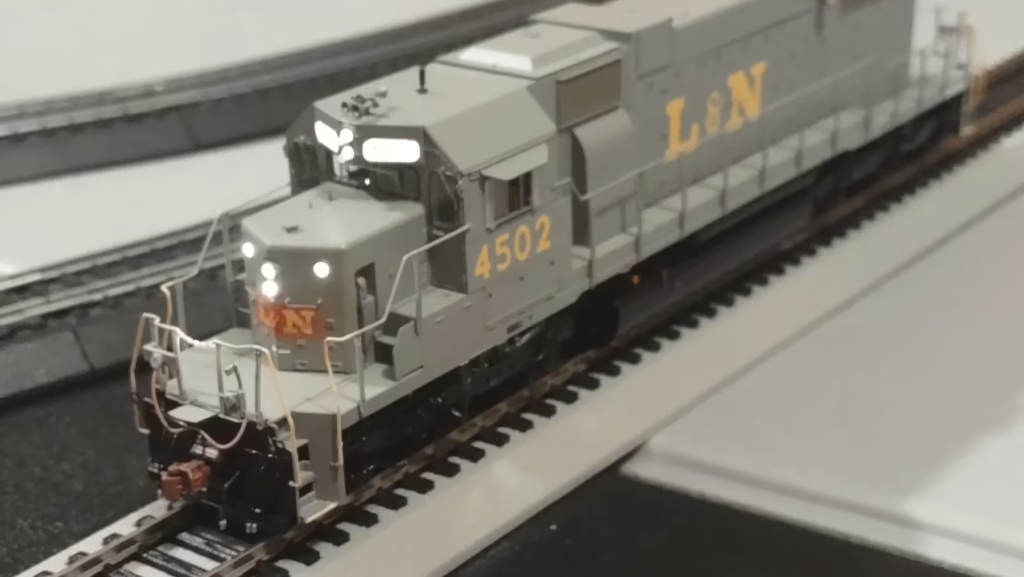
For Beginners or First-Time Layout Builders
If you are just starting out in HO scale, Code 100 track is a safe and easy choice. It’s robust, readily available, and will work with any train you might have. Using Code 100 sectional track (like Atlas snap-track or Bachmann E-Z Track) allows quick setup with minimal fuss. The slightly lower cost and inclusion in starter sets means you can get trains running sooner on a budget. Code 100 is very forgiving of older or less-than-perfect equipment – you won’t have to worry about flange issues at all. That said, beginners are not forced to use Code 100 – if you have all modern equipment and care about realism from the get-go, there’s no harm in starting with Code 83.
Many newcomers successfully build their first layouts with Atlas Code 83 sectional track or flex track, since it’s also designed to be user-friendly and it looks better. Just remember that if your initial train set came with Code 100 track, you’d need to either stick with Code 100 or invest in new Code 83 track (plus transition joiners if mixing). Overall, if your priority is ease and compatibility, Code 100 (especially integrated roadbed track systems) is slightly better for beginners; if your priority is realistic appearance and you’re comfortable doing a bit more track laying work, Code 83 is attainable even for a beginner due to its affordable availability.
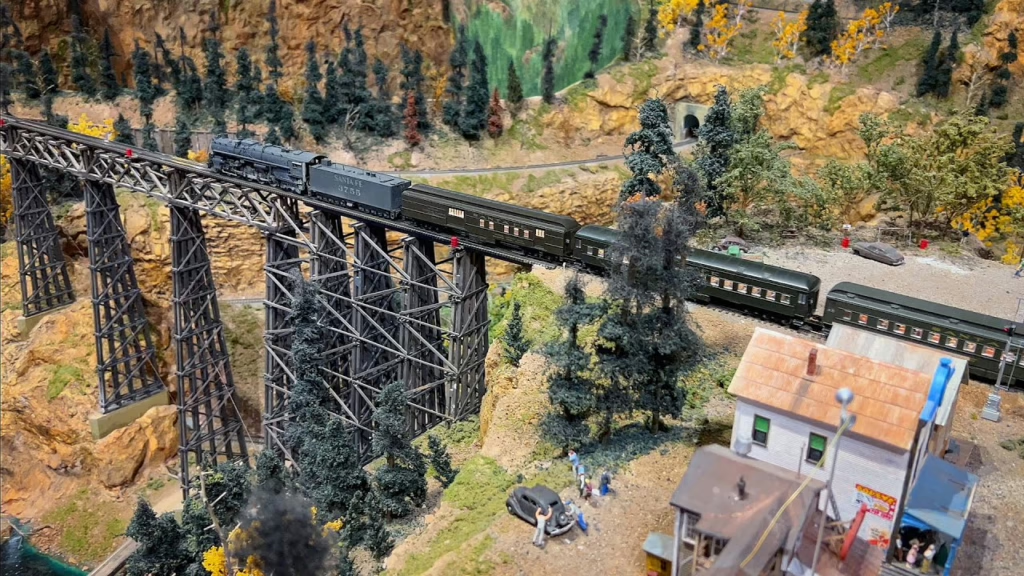
For Advanced Enthusiasts and Realism-Focused Modelers
Most seasoned hobbyists will recommend Code 83 (or even smaller code on sidings) for a truly convincing layout. The consensus is that Code 83 “looks more realistic… and the modest cost [difference] is worth it”. It has become the standard for exhibition-quality HO layouts. An advanced modeler might use Code 83 on mainlines, then Code 70 or 55 on branch lines or yards for ultimate fidelity (since lighter rails were used on light branch lines in real life).
Even if you stick to Code 83 everywhere, your trains and scenery will benefit from the more to-scale appearance. The variety of turnouts available in Code 83 (especially from Walthers and Peco) also suits complex track plans that an experienced hobbyist might create. Do keep in mind that working with flex track and custom-fitting turnouts is a skill acquired over time – Code 83 flex from brands like Micro Engineering requires careful bending, so it’s ideal for those comfortable with tracklaying techniques. But operationally, you won’t be sacrificing performance by choosing Code 83.
As one expert modeler noted, “operationally there is no difference… It is more a visual thing”. Advanced modelers also tend to meticulously paint and ballast their track, which further enhances Code 83’s advantage (and can even make well-done Code 100 look decent, albeit still oversized rail). If you’ve been in the hobby a while and have mostly newer rolling stock, Code 83 is likely the best choice for realism. Your locomotives and rolling stock will quite literally “look better on Code 83”.
In Conclusion
Both Code 100 and Code 83 will allow you to run an enjoyable HO scale railroad, but they serve slightly different priorities. Code 100 is about reliability and simplicity, making it a great choice for beginners, casual modelers, or those resurrecting older train equipment. Code 83 is about achieving a realistic look that satisfies the discriminating eye, which appeals to advanced modelers and those building permanent or exhibition layouts. Given that prices and availability are now similar, the decision comes down to your goals.
A pragmatic approach some modelers take is to use Code 100 in the early stages or hidden areas, and Code 83 in the visible expansion – this way you get the best of both. If you’re starting fresh and have no old rolling stock constraints, there’s little reason not to choose Code 83 for a new layout since it has become “the new standard in model railroading” for HO. On the other hand, if you already have a lot of Code 100 track or vintage equipment, you’re not at a huge disadvantage – with some painting and ballast, your layout can still shine, and you’ll have bulletproof operation.
Recommendation Summary
For a beginner building a first layout, especially if using equipment from a starter set, Code 100 (e.g. Atlas snap-track or Bachmann E-Z Track) is recommended for its ease and guaranteed compatibility. For a serious hobbyist or anyone aiming for a realistic display, Code 83 is the better choice – it offers a realistic appearance with virtually no downsides for modern HO models. Ultimately, the best choice is what fits your needs and comfort level, but armed with the above information, you can make an informed decision on the track that will keep your trains running smoothly and looking great.
